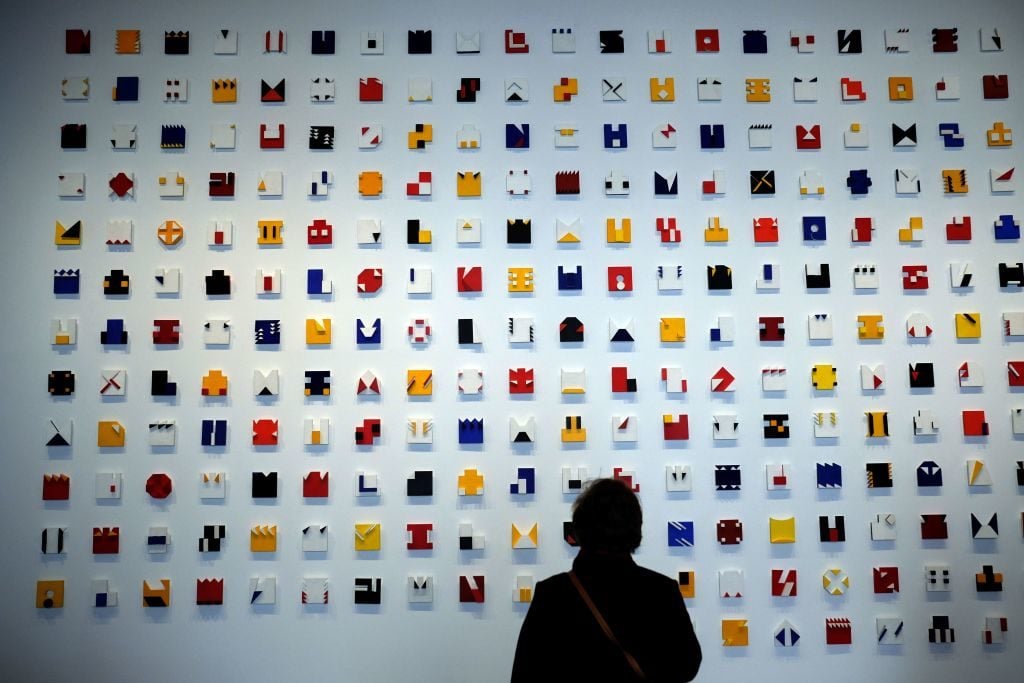Art World
In the Struggle to Close the Gender Pay Gap in the Art Market, Brazil Has Set a Surprising Example
Why do Brazilian women artists set higher auction records than their male counterparts?

Why do Brazilian women artists set higher auction records than their male counterparts?

by
Henri Neuendorf

Politically speaking, Brazil may not seem so friendly to women these days. But in the art world the country has a surprisingly feminist track record. In contrast to most Western countries, which are still struggling to correct lingering gender imbalances in their art markets, Brazilian female artists have enjoyed closer parity with their male counterparts in terms of both historical recognition and market value.
As SP-Arte, the country’s leading art fair, kicks off this week (through April 7), it offers an opportunity to crunch the numbers and consider the history.
The trend goes all the way back to the 1920s and 1930s, when painters Anita Malfatti and Tarsila do Amaral laid the foundations for subsequent generations of Brazilian artists with their early embrace of Modernism. Then came the emergence of the Neo-Concrete movement in the late 1950s, led by artists Lygia Clark, Lygia Pape, and Mira Schendel—all of whom have recently enjoyed international recognition at such institutions as New York’s Museum of Modern Art, the Metropolitan Museum of Art, and the Tate Modern in London. Clark also holds the auction record for a Brazilian artist, set in 2013 for her painting Contra Relevo (Objeto N. 7) (1959), which sold for $2.2 million at Phillips New York.
The trend persisted in the 1980s, when artists such as Adriana Varejão and Beatriz Milhazes rose to international prominence, boosted in part by the 1989 exhibition “Art in Latin America: the Modern Era, 1820–1980” at the Hayward Gallery in London, which introduced many Brazilian artists to a European audience for the first time. Last year, Varejão and Milhazes were the two top-selling Brazilian artists, each racking up just over $2.8 million in total sales, according to artnet’s Price Database. Milhazes also holds the title to the third-highest selling work by a Brazilian artist (for $2 million in 2012), and Varejão, the fifth-highest ($1.7 million in 2011).
Experts cite many potential reasons for the enduring trend. First, the country’s economic boom between 1945 and 1964 created opportunity for many in the country, including women and immigrants. And because the nation lacked a formal gallery or museum infrastructure until the 1970s, the art world was easier to break into than it was in other countries where systems (and gatekeepers) were more formalized. (Notably, many of Brazil’s long-running top art dealers, including Luisa Strina and Marcia Fortes, are also female.)
But does this positive trend actually have sexist roots? In Brazilian society, girls and women were encouraged to take up arts and crafts, which was perceived as a feminine pursuit, while boys and men were funneled into more stable white-collar careers. As a result, it was mostly women who enrolled in art schools and chose careers as artists.
“This may be the reason why Brazilian women, unlike their European or American counterparts, do not need to struggle to penetrate the art world establishment—it is ‘their’ world,” critic Aracy Amaral wrote in a catalogue essay for the 1997 exhibition “The Art of Ultramodern: Contemporary Brazil” at the National Museum of Women in the Arts in Washington, DC.
As of now, however, Brazil’s male artists aren’t lagging too far behind. Hélio Oiticica’s auction record stands at $615,000, set in 2017 at Phillips New York, while Sergio Camargo’s is at $2.17 million, set in 2013 at Sotheby’s New York—just barely trailing Lygia Clark’s $2.23 million record.